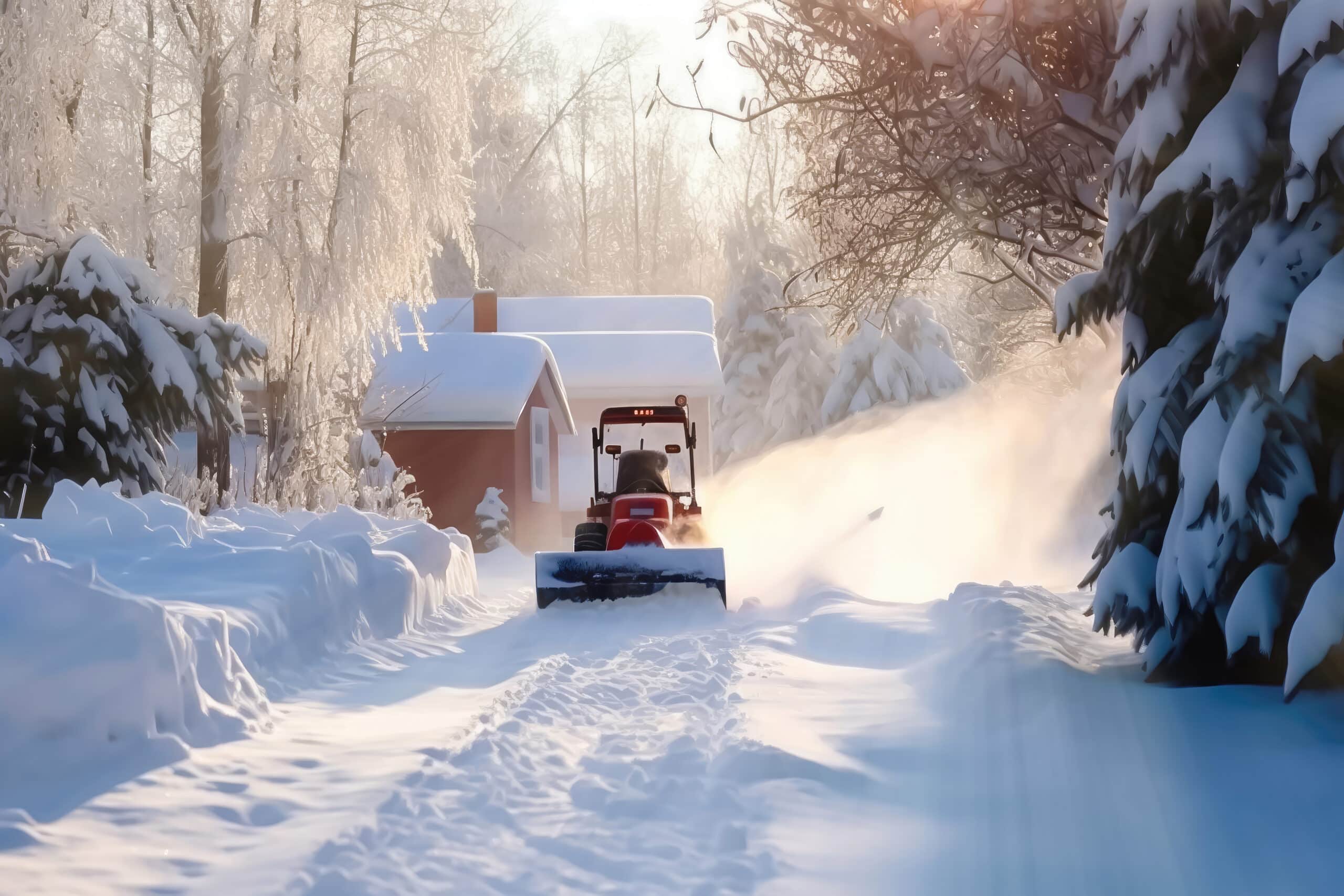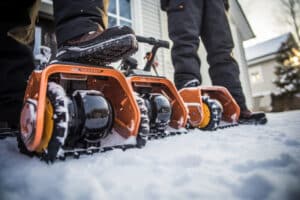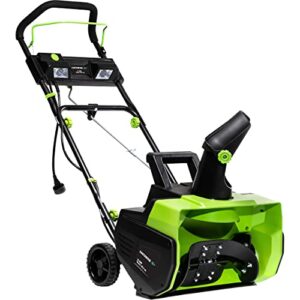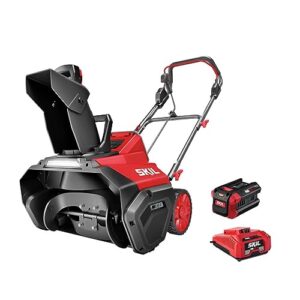What differentiates single from two-stage snow blowers?
Key Takeaways
- Single-stage snow blowers are designed for light to moderate snowfalls and are more affordable compared to two-stage snow blowers.
- Single-stage snow blowers are compact and easy to maneuver, making them ideal for clearing small driveways, paths, decks, and patios.
- Two-stage snow blowers are more powerful and can handle heavy snowfall, with a wider clearing width and the ability to throw snow a greater distance, making them suitable for larger areas.
When it comes to clearing snow from your pathways, driveways, and front walks, having the right snow blower can make a big difference. Single-stage and two-stage snow blowers are two popular options, each with its own set of advantages and disadvantages. In this article, we will explore the key differences between single-stage and two-stage snow blowers to help you make an informed decision.
Single-Stage Snow Blowers
Single-stage snow blowers are designed for light to moderate snowfalls. They feature a single auger that both picks up and discharges the snow. The auger is the rotating blade that moves the snow into the machine and throws it out. Single-stage snow blowers are typically more affordable compared to their two-stage counterparts.
One of the main advantages of single-stage snow blowers is their compact size and ease of maneuverability. They are generally lighter and more mobile, making them ideal for clearing small driveways, paths, decks, and patios. Some models, like the Snow Joe X2-SB18 48V Ionmax, can even throw snow up to 40 feet for exceptional clearance.
Single-stage snow blowers are also available in both electric and gas-powered options. Electric models are often cordless and battery-powered, providing convenience and ease of use. Gas models, on the other hand, have efficient engines and can handle larger snow loads.
However, single-stage snow blowers do have their limitations. They are not suitable for heavy or wet snowfalls, as their auger may struggle to handle the weight and moisture. They also have a limited snow throw distance, generally around 36 inches, which may not be sufficient for larger areas. Additionally, the auger blades, which touch the ground, require rubber tips that may wear out over time. Single-stage snow blowers are not self-propelled and require manual pushing.
Two-Stage Snow Blowers
Two-stage snow blowers are more powerful and designed for heavier snowfalls. They feature two separate augers – one for gathering the snow and another for discharging it from the chute. The gathering auger does not touch the ground and is made of metal, providing increased durability.
One of the main advantages of two-stage snow blowers is their ability to handle larger snow loads. They can handle snow depths up to 2 feet and have a wider clearing width compared to single-stage snow blowers. Two-stage snow blowers can also throw snow a greater distance, typically up to 60 inches, making them suitable for larger areas.
Two-stage snow blowers are also more versatile in terms of the surfaces they can handle. They are suitable for paved surfaces, gravel driveways, and even steeper inclines. Their increased power and functionality make them a popular choice for homeowners with larger properties or those living in areas with heavy snowfall.
However, two-stage snow blowers are generally larger and bulkier compared to single-stage models. This can make them more difficult to maneuver in narrow spaces or small driveways. They are also typically gas-powered, which may require fuel mixing and regular maintenance.
Conclusion
In summary, the main difference between single-stage and two-stage snow blowers lies in their power and capability. Single-stage snow blowers are suitable for light to moderate snowfalls and are compact and easy to use. They are more affordable and ideal for clearing small driveways and paths. On the other hand, two-stage snow blowers are more powerful and can handle heavy snowfall. They have a wider clearing width and can throw snow a greater distance, making them suitable for larger areas. However, they are larger and bulkier, and may not be as maneuverable in tight spaces.
Ultimately, the choice between a single-stage and two-stage snow blower depends on your specific needs and the amount of snowfall you typically experience. Consider the size of your property, the frequency of snowstorms, and the type of surfaces you need to clear. Both types of snow blowers have their advantages and disadvantages, so it’s important to choose the one that best suits your requirements.
Related Websites:
FAQs:
Q: What is the difference between single-stage and two-stage snow blowers?
Single-stage snow blowers are designed for light to moderate snowfall and ideal for smaller areas. They use an auger to scoop up and throw snow. Two-stage snow blowers, on the other hand, are more powerful and suitable for heavy snowfall and larger areas. They have an auger to gather the snow and an impeller to throw it out.
Q: What are the advantages of single-stage snow blowers?
Single-stage snow blowers are typically more affordable, compact, and easier to maneuver. They are suitable for clearing smaller areas and less dense snow. Additionally, they require less maintenance and are lighter in weight.
Q: What are the advantages of two-stage snow blowers?
Two-stage snow blowers are more powerful and can handle heavy, wet, or deep snow with ease. They offer greater throwing distance and are suitable for larger areas. They also come with features like adjustable chute control and power steering for enhanced control and convenience.
Q: What factors should I consider when choosing between single and two-stage snow blowers?
When choosing between single and two-stage snow blowers, consider factors such as the size and layout of the area to be cleared, the average snowfall in your region, your budget, and your personal preferences for snow removal. Assessing these factors will help you make an informed decision based on your specific needs.
Q: Why is proper snow blower selection important for efficient snow removal?
Proper snow blower selection is important for efficient snow removal because it ensures that you have the right tool for the job. Using the appropriate type of snow blower based on your needs and the conditions will make the snow removal process easier, quicker, and more effective.






